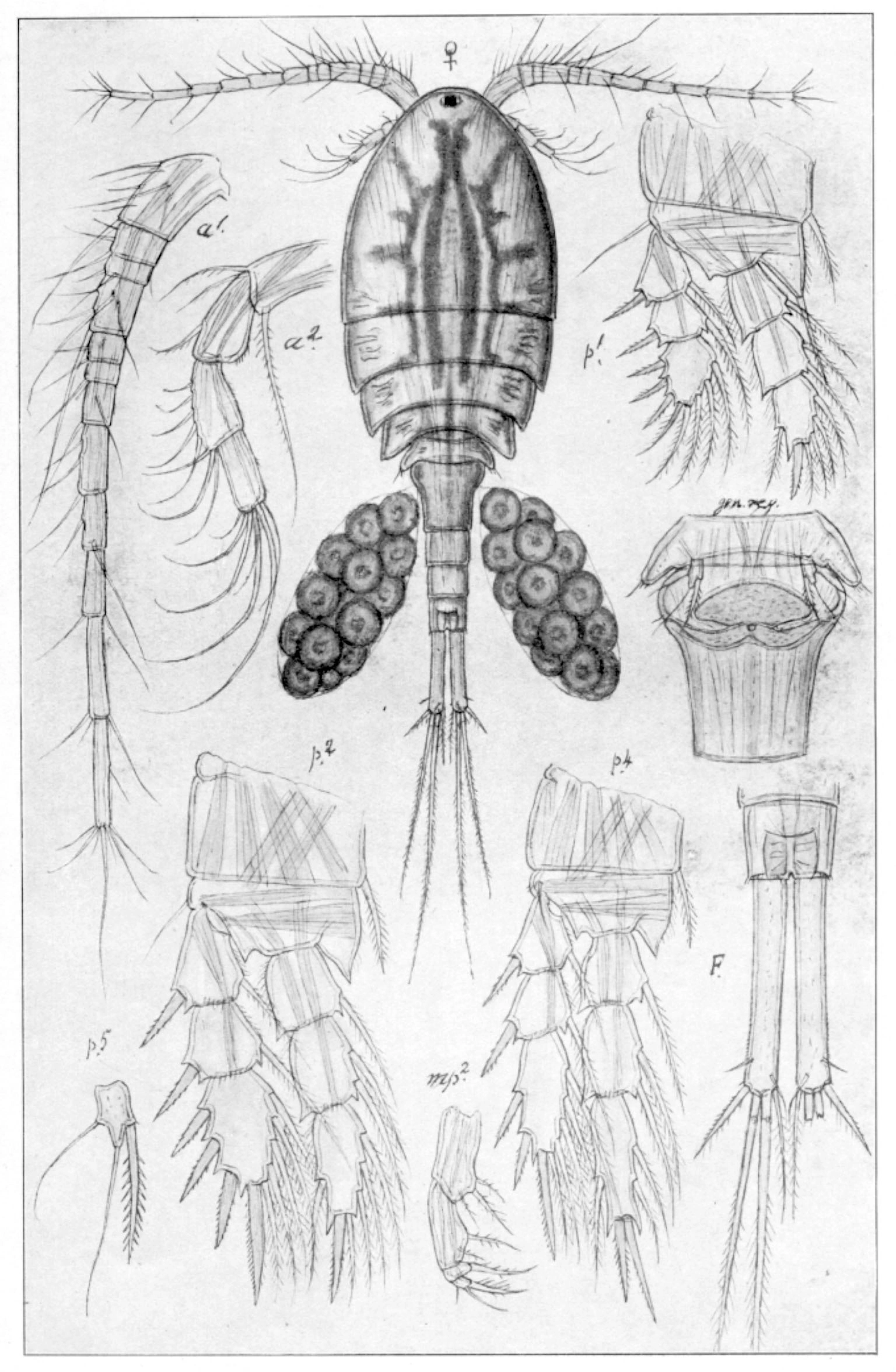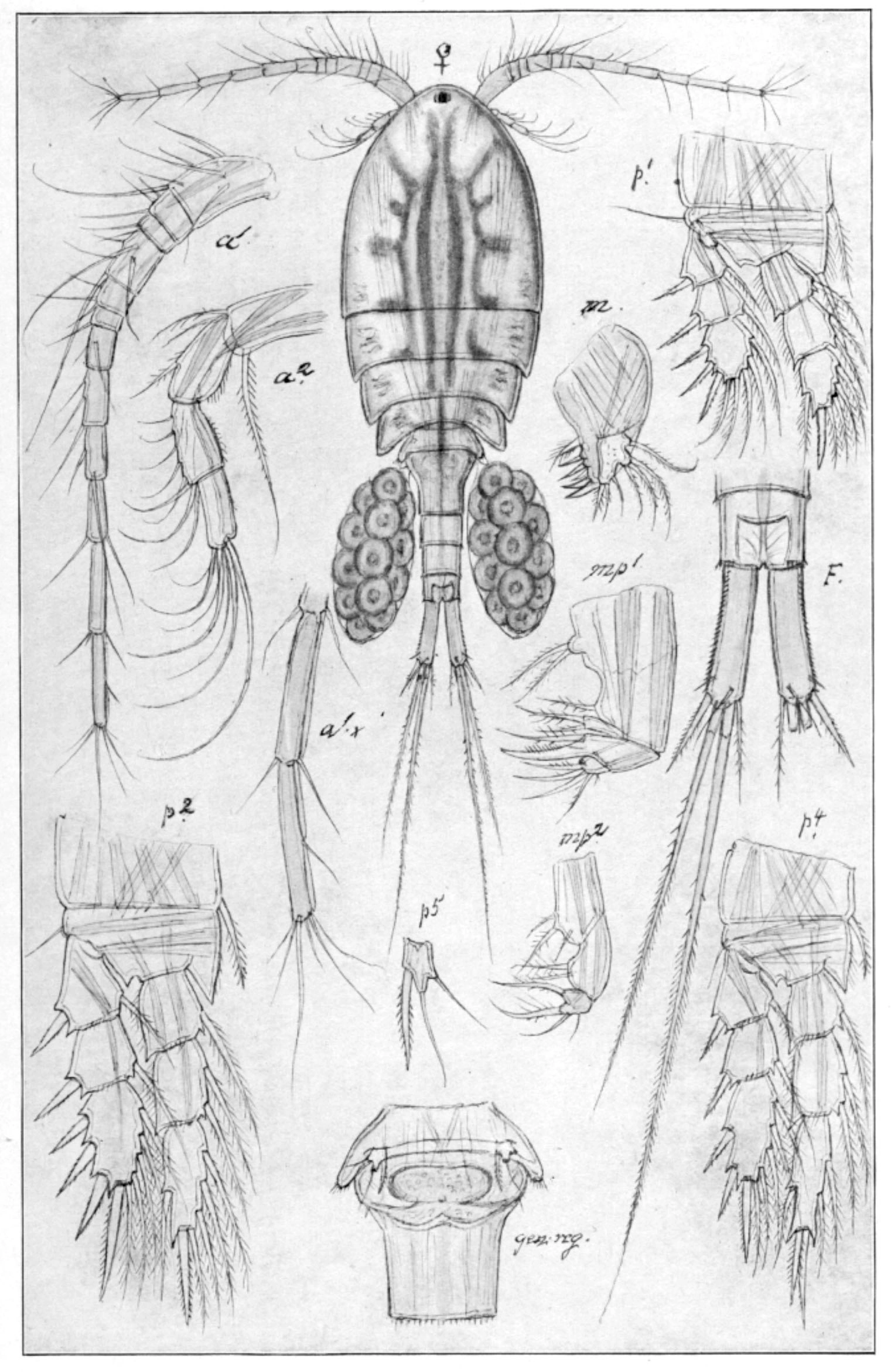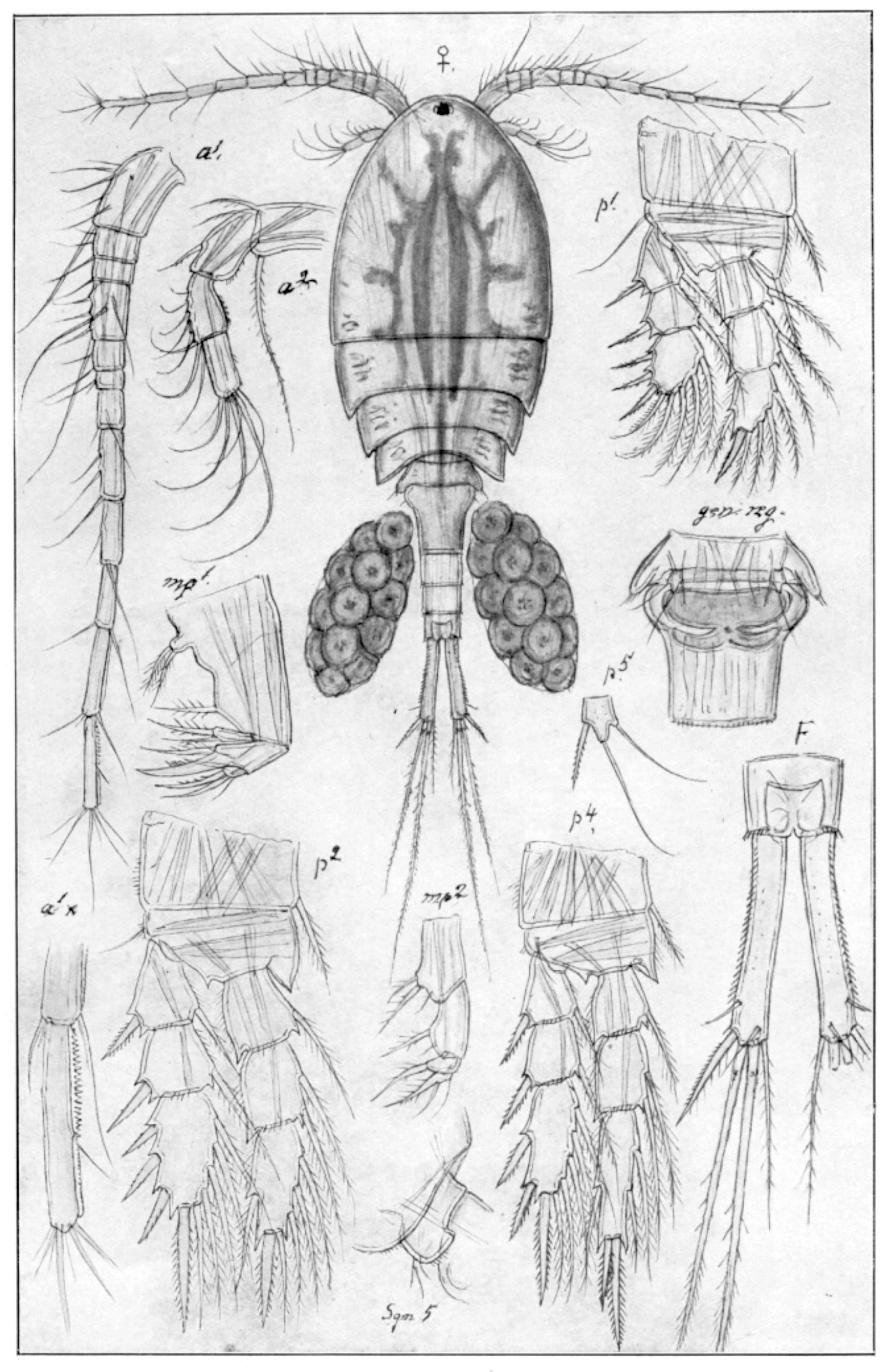Eucyclops speratus
Compared with Eucyclops serrulatus, which is the most common littoral copepod, E. speratus has a tail that is longer and where the outer edge is nearly smooth. It is characterized as moderate acid sensitive.
Key characteristics
Eucyclops speratus (female)
Eucyclops speratus has a body which is moderately slender but of larger size than E. serrulatus. Its tail is longer than in the previous species, and is more than six times as long as wide. The outer edge is nearly smooth with only very slight traces of small denticles in the posterior part. The antennas are long and slender and the last joint of the antenna has a smooth surface. Its colour is light olivaceus or yellowish grey.
Female: Length 1.2–1.5 mm
Male: Length 0.7–0.9 mm
Ecology and distribution
E. speratus is found in more than 11 % of the water bodies. It is common in the southeastern areas, with a few records from the west coast. In northern Norway it has a scattered distribution. It occurs from sea level and up to 1253 m a.s.l., being most frequently found in water bodies below 500 m a.s.l. Though E. speratus, according to literature, is most common in shallow stagnant water, many of the records from Norway is also from the littoral zone of large lakes. E. speratus occurs most frequently in neutral, electrolyte rich water. It is characterized as moderate acid sensitive.
| Vitenskapelig navn | < 4,5 | 4,5 - 4,9 | 5,0 - 5,4 | 5,5 - 5,9 | 6,0 - 6,4 | 6,5 - 7,0 | 7,0 - 7,4 | > 7,5 |
|---|---|---|---|---|---|---|---|---|
| 0 | 2,6 | 8,6 | 13,7 | 18,8 | 12,3 | 15 | 23 |
| Vitenskapelig navn | < 1,0 | 1,0 - 1,4 | 1,5 - 1,9 | 2,0 - 2,9 | 3,0 - 3,9 | 4,0 - 4,9 | 5,0 - 6,9 | 7,0 - 9,9 | > 10,0 |
|---|---|---|---|---|---|---|---|---|---|
| 2,9 | 6 | 6,4 | 7,7 | 11,5 | 14,2 | 19,4 | 15,7 | 21,6 |
| Vitenskapelig navn | < 0,01 | 0,01 - 0,09 | 0,1 - 0,9 | 1,0 - 9,9 | 10,0 - 99 | 100 - 999 | > 1000 |
|---|---|---|---|---|---|---|---|
| 21,6 | 7,5 | 4,8 | 6,5 | 12,2 | 19 | 34,8 |
| Vitenskapelig navn | < 100 | 100-299 | 300-499 | 500-699 | 700-999 | >1000 |
|---|---|---|---|---|---|---|
| 10,2 | 20,9 | 12 | 3,4 | 5,1 | 1,8 |
Look alikes
Eucyclops serrulatus and E. denticulatus


